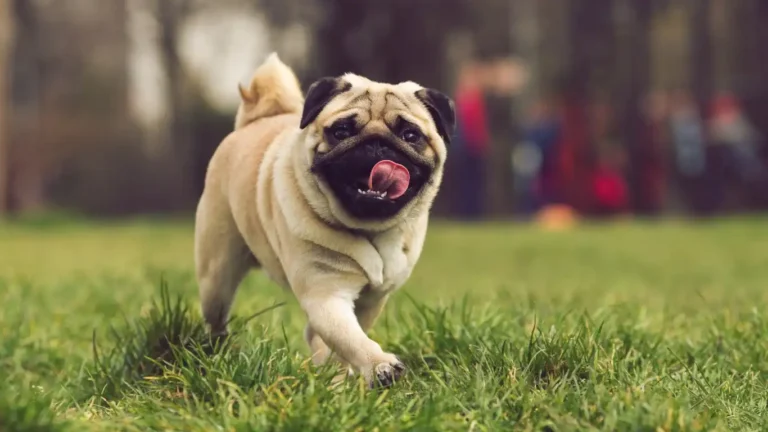Why Your Dog May Be Having Seizures in Sleep and What to Do
Seeing your dog twitch or shake in their sleep can be confusing, even scary. Many pet owners wonder if it’s just a dream—or something more serious. Seizures during sleep in dogs are not uncommon, and they can happen for a variety of reasons. Understanding what’s going on can help you respond calmly and take the right next steps for your pet’s health.
Understanding Sleep and Seizures in Dogs
Just like humans, dogs go through different stages of sleep. They have periods of deep rest, light sleep, and REM (Rapid Eye Movement) sleep. REM is the stage where dreams happen, and during this time, it’s normal for dogs to move a bit—like twitching their paws or paddling their legs.
But sometimes, what looks like dreaming could be a seizure. A seizure is a sudden burst of abnormal electrical activity in the brain. It can cause uncontrolled body movements, drooling, or even temporary loss of awareness. If these episodes happen during sleep, they may be harder to spot or diagnose.
Dogs with seizures don’t always show signs while awake. In fact, many owners report noticing symptoms only while their dog is resting or sleeping. That’s why learning the difference between dreaming and seizures matters.
How the Brain Works During Sleep
The brain never completely “turns off”—even when asleep. During REM sleep, your dog’s brain is actually quite active. This is when dreaming occurs, and it’s a healthy part of sleep cycles. Some muscle movement is normal in REM, especially in puppies and senior dogs.
Seizures, on the other hand, are not part of the normal sleep process. They result from misfiring neurons, kind of like an electrical storm in the brain. This can lead to odd movements, vocalizations, or behaviors that don’t match typical dreaming patterns.
When a seizure happens during sleep, it usually starts suddenly and lasts for a short time—often under two minutes. Afterward, your dog may seem disoriented, tired, or clingy. This post-seizure phase is called the “postictal” state.
Common Causes of Seizures During Sleep
There isn’t a one-size-fits-all answer, but several medical and genetic issues may cause seizures while your dog sleeps:
- Epilepsy: This is the most common reason for repeated seizures in dogs. It often begins between 6 months and 6 years of age. Some breeds, like Beagles, Golden Retrievers, and Border Collies, are more likely to have it.
- Liver disease (Hepatic encephalopathy): If the liver isn’t working right, toxins can build up in the brain and cause seizures. This might happen more often at night or after meals.
- Low blood sugar (Hypoglycemia): Small breeds and diabetic dogs are at risk. Without enough sugar for the brain, seizures can happen, especially during long stretches without food (like overnight).
- Brain tumors: Although less common, growths in the brain can cause seizures. These are more likely in older dogs and may show up suddenly or worsen over time.
- Infections or inflammation: Conditions like meningitis or encephalitis (swelling of the brain) can trigger seizures, often along with fever, lethargy, or neck pain.
- Head trauma: Past injuries—even if they seemed minor—can affect brain activity later in life.
- Toxin exposure: Ingesting certain poisons, plants, or human medications can affect the nervous system and lead to seizures, sometimes delayed until sleep.
If you’re unsure what caused a seizure, a veterinarian can help you investigate. Keeping a log of when and how episodes happen can provide helpful clues.
How to Recognize a Seizure in Sleep
It’s easy to confuse dreams with seizures. Here are some signs that what you’re seeing may be more than dreaming:
- Stiff or rigid limbs
- Violent or jerky movements that don’t stop quickly
- Paddling legs without waking up
- Foaming at the mouth or drooling excessively
- Involuntary urination or defecation
- Loss of consciousness or failure to respond to your voice
- Confusion, restlessness, or whining after waking up
Normal dreaming is usually brief, less intense, and doesn’t leave your dog disoriented afterward. Trust your instincts—if something seems off, it’s worth checking out.
What to Do During and After a Seizure
Watching your dog have a seizure is upsetting, but try to stay calm. Here’s what you can do:
- Keep your dog safe by removing nearby objects they could bump into.
- Don’t try to hold them down or put anything in their mouth.
- Speak softly and stay nearby until the seizure ends.
- Time the episode—most seizures last less than 2 minutes.
- Record the event on video if possible. It can help your vet with diagnosis.
- Afterward, comfort your dog and offer water once they are alert.
It’s normal for dogs to be tired or confused after a seizure. Let them rest in a quiet, familiar space and monitor their behavior closely.
When to Call the Vet
Not all seizures require emergency care, but some situations do. Contact your veterinarian if:
- Your dog’s seizure lasts more than 5 minutes.
- They have more than one seizure in a short period (cluster seizures).
- This is their first seizure.
- They don’t recover fully within an hour.
- They show signs of illness (vomiting, loss of appetite, limping, fever).
Even if a seizure seems mild, it’s a good idea to have your dog checked. Your vet may suggest tests like blood work, a neurological exam, or imaging (like an MRI) to find the cause.
Early treatment can help manage seizures and improve your dog’s quality of life.
Final Thoughts
Seizures in sleep can be unsettling, but they’re not always a sign of something serious. Many dogs live full, happy lives with the right care and support. If you notice anything unusual during your dog’s sleep—especially repeated episodes—don’t hesitate to talk to your vet.
You know your dog best. Trust your observations, ask questions, and work with a veterinary team you trust. You’re not alone, and help is available.






